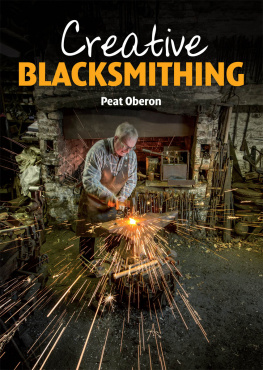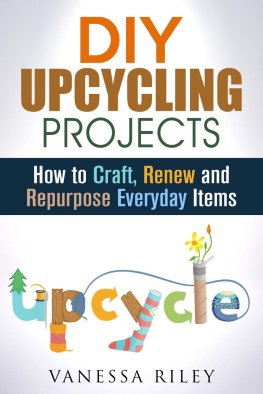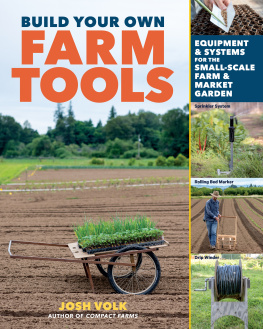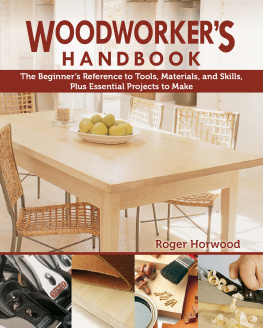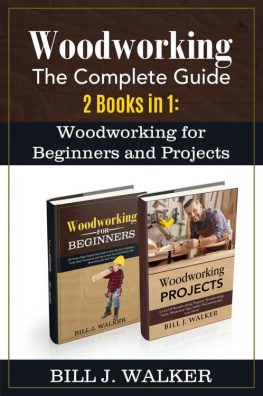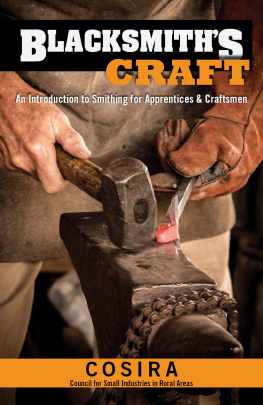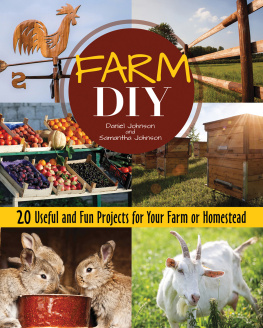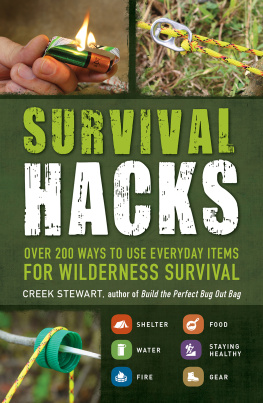The Blacksmiths Craft
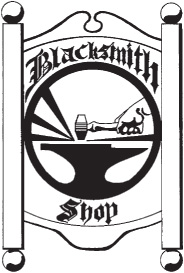
The Blacksmiths CRAFT
A PRIMER OF TOOLS AND METHODS
Charles McRaven

To Bill Cameron, the best blacksmiths helper I ever had.
The mission of Storey Publishing is to serve our customers by
publishing practical information that encourages
personal independence in harmony with the environment.
Edited by Carleen Perkins
Cover design by Kent Lew
Text design and production by Ron Toelke, Toelke Associates
Line drawings by Chandis Ingenthron and Charles McRaven
Photography by Linda Moore McRaven, Charles McRaven, and Ashley McRaven
Indexed by Christine R. Lindemer, Boston Road Communications
2005 by Charles McRaven
First edition published in 1981 as Country Blacksmithing.
All rights reserved. No part of this book may be reproduced without written permission from the publisher, except by a reviewer who may quote brief passages or reproduce illustrations in a review with appropriate credits; nor may any part of this book be reproduced, stored in a retrieval system, or transmitted in any form or by any means electronic, mechanical, photocopying, recording, or other without written permission from the publisher.
The information in this book is true and complete to the best of our knowledge. All recommendations are made without guarantee on the part of the author or Storey Publishing. The author and publisher disclaim any liability in connection with the use of this information. For additional information, please contact Storey Publishing, 210 MASS MoCA Way, North Adams, MA 01247.
Storey books are available for special premium and promotional uses and for customized editions. For further information, please call 1-800-793-9396.
Printed in the United States by Versa Press
20 19 18 17 16 15 14 13 12 11 10 9
Library of Congress Cataloging-in-Publication Data
McRaven, Charles.
The blacksmiths craft : a primer of tools and methods / Charles McRaven.
p. cm.
Includes bibliographical references and index.
ISBN 978-1-58017-593-7 (pbk. : alk. paper)
1. Blacksmithing. I. Title.
TT220.M36 2005
682dc22
2005004013
TABLE OF CONTENTS
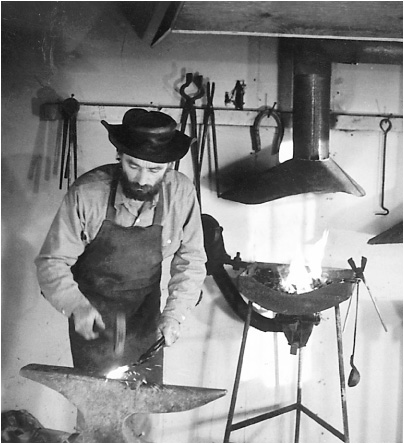
PREFACE TO THE NEW EDITION
With the back-to-the-land movement largely a memory, the role of blacksmithing as a craft has changed. In the early 1980s, when this book was first published as Country Blacksmithing, homesteaders learned crafts like blacksmithing to assert their independence from the modern world of factory-made throwaways. They wanted to create something that was beautiful, useful, and home-fashioned.
Although most blacksmiths today tend to be hobbyists, not homesteaders, their eagerness to learn blacksmithing comes from the same desire for authenticity. Like most craftspeople, the smith produces one-of-a-kind creations that people want more than they may really need. Whether forging fine knives of carbon or Damascus steel or creating delicately wrought iron gates, the smiths work today is cultural rather than purely necessary.
There are those who make a living from it. In our area are two highly successful smiths who cater to wealthy clients. Both specialize in grilles, gates, and other ornamental iron. Both have spent years building names for themselves, and their work is now in demand. One has grillwork in the National Cathedral in Washington, D.C.
Most of us, though, practice our craft not as our principal livelihoods. I know a carpenter who does smithing as a sideline. He can forge a latch or a set of hinges at a reasonable price. A stone mason I know once thought he could stay alive by smithing. He couldnt, but he still enjoys it, specializing in tool forging. My friend David Morris, a doctor, has a complete shop at his home. I met him when he took a six-day workshop from me to learn how to use all those tools.
I used to go out of my way to fashion necessities of iron and steel myself, scorning factory-made products I didnt have the money to buy anyway. Today, however, my blacksmithing is mostly limited to the needs of the historic buildings we restore, and an occasional commission. I still forge knives, chisels, pot racks, fireplace cranes, and andirons, but more often ornamental hinges, Norfolk or Suffolk latches, reproduction sconces, and other wrought-iron fixtures for whatever house were working on at the time.
But aside from my restoration work, I do smithing because I enjoy it. I like being able to forge anything I can imagine and anything I might need, from stray pieces of iron or steel. And I know each piece will be the only one just like that. Your forged work will become heirlooms.
The decision to forge something yourself often comes down to whether you want the hand-forged chisel or youd be happy with the plastic-handled one from the hardware store. Case in point my daughter Chelsea was studying geology in college. She wanted a geologists stone hammer, and she didnt want a factory-made one. She didnt ask if I could forge it for her, but how soon could I do it?
Well, now. How do you turn down such an opportunity? I had some good coil spring stock in the shop, after all. Took just over half a day to make it, with polished ash grips and the tempering colors left in. No way could a mass-produced hammer have filled the bill nearly so well. Chelsea loans it only to special people who really appreciate it.
You might also find yourself forging something because you just cant get it anywhere else. When I bought an old Case tractor a few years ago, I designed and built a three-point hitch for it. Then I discovered the hydraulic pump shaft, driven off the engine timing gear, was broken. No replacement available. My choices were either to have a machine shop duplicate the shaft or do it myself. The shaft was threaded at one end, with a step to a smaller diameter. It wouldnt be simple, but hey, Im a blacksmith, right? The shaft wasnt perfect, but its still functioning years later.
Be warned, though. This craft will get into your blood. No matter how serious you are about blacksmithing, whether youre a purist or a hobbyist, a beginner or a veteran, you will never again look at the black metal in the same way. And itll be hard to leave it alone.
Charles McRaven
Albemarle County, Virginia
January 2005
1
THE PIONEER SMITH
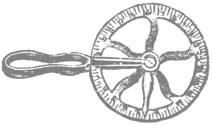
Setting up your forge on your own farm or modern homestead will parallel so nearly the experience of the pioneer blacksmith coming into the new country that comparisons are inevitable. You may already have your place established cabin, clearing, garden and you will no doubt be a settler first and a blacksmith second, instead of the other way around. You may wind along your woods road in a wheezing pickup truck or a station wagon with your anvil sitting solid back there and your tools clinking on the way home. But its all so nearly the same. The early smith made settlement possible; in this day the craft can make it so much better, so much nearer the independent ideal.
The Frontier Forge
Next page


